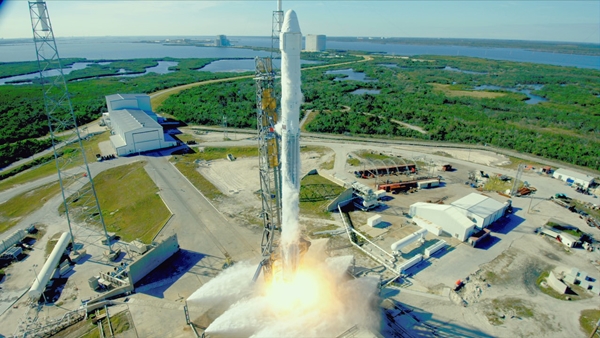5 January 2018. Among the experiments carried to the International Space Station in mid-December is a test of continuous separations of one liquid from another, used in drug and chemical manufacturing. The experiment is evaluating a process developed by Zaiput Flow Technologies in Cambridge, Massachusetts, a 4 year-old spin-off enterprise from Massachusetts Institute of Technology.
Zaiput Flow Technologies is commercializing a technology developed by then-postdoctoral researcher Andrea Adamo in the lab of MIT chemical engineering professor Klavs Jensen. Adamo’s research discovered a faster and more effective way to separate liquids in suspension. Most of today’s separation methods use gravity, which allows denser and heavier fluids in a tank to sink to the bottom, where they’re extracted. This process, says the company is slow and prone to error, since the fluids do not completely separate, leading to contamination.
Adamo’s process instead uses surface tension on a membrane to separate and extract one fluid from another. The fluids are feed through a tube, where they meet a polymer membrane that repels one of the fluids and attracts the other. Carefully controlled pressure through the tube separates the liquids into different tubes, where they’re collected. “You want a little bit of pressure,” says Adamo in an MIT statement, “so the chemical goes through, but not too much to push through the unwanted liquid. The internal controller ensures this happens at all times.”
As reported in Science & Enterprise in April 2016, Adamo and colleagues at MIT applied this technology to a continuous flow drug manufacturing system that produces small quantities of compounds on demand. Since then, Zaiput began building liquid-liquid separators and extractors for pharmaceutical companies and academic labs. Now, Adamo believes the ability to produce drugs and chemicals on demand without gravity can be useful for space exploration.
“When people go on deep space explorations, or maybe to Mars, these are multiyear missions,” notes Adamo. “But how do you synthesize chemicals for drugs and other products without gravity? We have that answer. Testing our unit in space will show that what we have done on Earth is fully exportable to space.”
That Zaiput separator unit is one of the systems launched from Cape Canaveral, Florida on 15 December as part of the cargo aboard a SpaceX Dragon space craft. The unit will be used for a series of experiments aboard the International Space Station to test separations of various liquids, with results captured through imaging. The ISS has a facility called TangoLab devoted to microgravity research. The experiments are expected to last about one month.
More from Science & Enterprise:
- Techniques Devised to Speed-Up Plant Breeding
- Parkinson’s Protein Experiment in Space Station Cargo
- Organ Chips to be Studied on Space Station
- Stem Cells Launched on Current SpaceX Flight
- Spacecraft Returns with Space Station Research Samples
* * *


 RSS - Posts
RSS - Posts
You must be logged in to post a comment.